Cng Container Insights & Buyer's Guide
Welcome to the leading edge of making new developments in natural gas transport and storage. Our CNG containers have been created and engineered to fulfill the heightened need for the compressed natural gas (CNG) storage and transportation system, which is efficient, safe, durable, and cost-effective. Understanding the role of CNG containers and their advantages for industries and individuals is extremely important as the world continues to transition to cleaner energy solutions.
What is a CNG Container and How Does it Work?
Understanding the Basics of CNG Containers
CNG containers, also called CNG cylinders or tanks, are specialized storage solutions meant for holding compressed natural gas at high pressures. These units of CNG containers are critical for natural gas storage and transportation. These cylindrical containers are made with strong, high-strength materials that prevent leaks and ensure safe containment of the gas. This advancement in CNG containers has optimized the modern use of natural gas, both for industrial processes and vehicle fuel.
How CNG Containers Facilitate Gas Transport
The movement of CNG is done with the help of specially designed transport containers, which maintain the high levels of pressure associated with compressed natural gas. These containers are mounted on CNG tube skid containers, which are vehicle platforms, moving from one place to another. In terms of mobility, these transport solutions are ideal for industries aiming to optimize their gas supply chain. With the help of CNG container businesses, operational flexibility is improved while dependency on traditional pipelines is reduced.
The Role of CNG Containers in Natural Gas Storage
Natural gas storage is an important part of energy management, and CNG containers are essential for the gas management process. These containers enable the efficient storage of gas in large volumes without requiring vast swathes of land for infrastructure. CNG containers facilitate gas supply management, whether for immediate use or long-term strategic reserves, by allowing natural gas to be stored in a smaller volume. This is incredibly useful in areas where there is little pipeline infrastructure or where gas resources need to be mobilized quickly.
Why Choose CNG Containers for Gas Storage and Transportation?
Benefits of Using CNG Storage Solutions
CNG storage solutions have a host of advantages which make them suitable for commercial and industrial applications. One of the benefits is the low cost of CNG containers when compared to other gas storage and transportation methods. Additionally, these containers are flexible, which makes it easier for businesses to respond to changes in energy requirements. The use of containers also aids in environmental sustainability as it helps to catalyze the adoption of cleaner energy sources by reducing carbon emissions and facilitating greener energy usage.
Durability and High-Pressure Capabilities of CNG Containers
CNG containers are crafted from corrosion-resistant steel and composite fibers, which efficiently endure weather conditions, punctures, transport stress, and other corrosive factors. These are some of the distinguishing features that make CNG containers so important for a vast variety of applications. The prestressed design and high range of capabilities allow CNG containers to exceed industry standard performance, enabling compressed storage surpassing 200 bar. Moreover, CNG containers also have exceptional CNG corrosion resistance while simultaneously maintaining higher-than-industry-standard reliability and performance.
Comparing CNG Containers with Traditional Gas Storage Methods
The benefits of CNG over traditional methods of gas storage are quite clear. Unlike large fixed storage tanks, CNG containers offer mobility and flexibility, enabling the transportation, storage as well and usage of compressed natural gas on demand. This feature is especially useful for off-grid and remote areas where conventional infrastructure is not suitable. Moreover, CNG's safety advantages over liquefied natural gas (LNG) storage make it the preferred choice since LNG storage relies on cryogenic temperatures to keep the gas in liquid form. This lowers the operational expenses and makes CNG a more economically viable choice.
How to Select the Right CNG Container for Your Needs?
Factors to Consider: Size, Pressure, and Material
Choosing the appropriate CNG container calls for attention to critical aspects like volume, pressure, and structural composition. Container size must be compatible with your storage needs, so you neither run out of space nor have too much of it. Pressure limits are equally important as they govern the maximum safe amount of gas for storage. About the structural composition, traditional steel and advanced composite materials also differ in their impact on the container’s durability, longevity, and resistance to environmental factors. Evaluating these factors will aid you in selecting a CNG container that is best suited to your requirements and operational conditions.
Understanding Type 4 Cylinders and Their Advantages
The most recent development in CNG storage technology is represented by Type 4 cylinders. These composite materials store gas under high pressure with reduced weight. Polymeric composites enhance the corrosion resistance and prolong the service life of the cylinders, making them a cost-effective storage solution. Type 4 cylinders' primary advantage is reduced transport weight, improving overall transport efficiency and reducing fuel consumption. As industrials align their energy policies, Type 4 cylinders are becoming more popular due to their cost-effective features.
Choosing Between CNG and Hydrogen Storage Options
Amid shifts in the energy landscape, the choice between CNG and hydrogen storage becomes more crucial. CNG and hydrogen both offer divergent advantages; CNG offers a well-established, low-cost means of natural gas storage, while hydrogen is a promising option for clean energy advancement. Both options should be chosen based on the infrastructure, energy demand, and ecological effects. Also, CNG containers are adaptable for hydrogen; therefore, they can assist in formulating future energy strategies.
What Are the Safety Standards for CNG Storage and Transportation?
Ensuring Safety with High-Pressure CNG Containers
Compressed natural gas (CNG) poses safety concerns while storing and transporting, but CNG containers safeguard this. These containers are tested thoroughly for performance under extreme internal pressures. Strong cap construction and pressure relief features prevent mismanagement and allow safe transport of gas. Operators are assured of safety when handling gas, CNG containers are easy to use, and they enable gas networks to operate safely.
Regulatory Compliance for CNG Transport and Storage
It is very important to follow the industry standards for the safe and effective usage of CNG containers. Several global and local laws control the design, manufacture, and operation of these containers so that they are safe and will perform as expected. Working with certified suppliers ensures that you are up to date with the guidelines. All these together help make sure your CNG storage and transportation activities are safe and compliant. Businesses looking to avoid legal trouble and ensure a reliable gas supply chain should immediately comply–reliable gas supply chain.
Best Practices for Handling CNG Containers
Making sure that the CNG containers are handled according to safety practices increases safety and efficiency. An effective gas management plan is characterized by well-structured training for personnel, routine maintenance, and operational procedures. Moreover, advanced monitoring tools can proactively identify potential problems, thereby preventing accidents and reducing downtime. Organizations can ensure that CNG storage solutions are fully optimized while risks are mitigated by cultivating a culture of safety and continuous enhancement.
How Does CNG Storage Contribute to Clean Energy Solutions?
The Role of CNG in Promoting Clean Energy
CNG storage has an essential purpose in the shift towards clean energy as it offers a dependable and efficient method of using Natural Gas, which is a cleaner option than traditional fossil fuels. Storage options facilitate the adoption of CNG, aiding in decreasing the emission of greenhouse gases while positively contributing to the advancement of sustainable energy frameworks. CNG especially serves well in public transport fleets or bus transit services, where it can drastically reduce emissions when juxtaposed with diesel or gasoline engines.
Environmental Benefits of Using CNG Containers
The use of these containers is also good for the environment because emissions are minimized. The use of CNG storage solutions assists in alleviating the use of coal and oil, which is much better for the natural ecosystem due to the reduction of fossil fuels. Effective transportation and storage of CNG also minimizes energy inefficiency, which improves the sustainability of energy systems. Once industries and governments work towards achieving climate change goals, the use of CNG storage solutions is momentous in achieving global sustainability.
Future Trends in CNG and Biogas Storage Solutions
The future of storing CNG and biogas looks very good because technological progress, as well as improvements in materials, are making innovations possible. Advanced trends that show a good sign for the future are improved storage space along with the storage of smart monitoring systems, which can be linked to renewable sources. Biogas has the potential to aid in improving CNG's storage system, and that can offer extra possibilities to reduce emissions while also supporting circular energy systems. Sustained energy solutions are becoming more and more popular, and because of that, CNG and biogas storage will contribute a lot to the energy landscape.
Frequently Asked Questions (FAQs)
Q: What are the advantages of using CNG tanks in transporting natural gas?
A: Benefits such as emission mitigation, cost savings, and comprehensive safety standards can be realized from the use of CNG tanks. These tanks are specifically engineered for the safe transport and storage of compressed natural gas. They can withstand high-pressure gas, which makes the entire CNG transport process smooth and secure.
Q: What are the considerations to keep in mind when selecting a CNG tank?
A: When selecting a CNG tank, specifications like volume, pressure ratings (i.e., 250 bar or 25MPa), and standards like EN 12245 need to be addressed. Considerations must be made concerning the tank’s specifications to your transport or storage requirements.
Q: What are the additional safety elements in CNG storage cylinders?
A: CNG storage cylinders incorporate a safety margin to endure high pressure. These also have features such as burst pressure ratings, corrosion resistance, and adherence to ADR regulations concerning the safe storage and transport of CNG fuel.
Q: In what other ways do bundle containers improve CNG transport?
A: Bundle containers, e.g., 9 tube bundles, are efficient in storing, transferring, and transporting high quantities of compressed natural gas. They improve spatial arrangement and adaptability in meeting various transport requirements, mobile storage, and refueling operations.
Q: Why is having a high-pressure rating considered important for CNG containers?
A: The storage and transportation of CNG are safely and effectively managed by the use of high-pressure ratings, i.e., 200bar or 250 bar. These ratings signify the height a container can hold the internal pressure of compressed natural gas which increases the level of safety and performance.
Q: In what way do CNG storage solutions differ from Hydrogen storage solutions?
A: H2 storage does utilize specific CNG and H2 storage solutions, but because of the smaller size and higher diffusivity, hydrogen requires additional components and tailored technologies. Compliance with industry standards is maintained by both solutions focusing on effective power, safety, and efficiency.
Q: What is the use of gas transportation containers?
A: The purpose of gas transportation containers is the transporting of compressed natural gas and other gases like LNG and H2 with safety. They guarantee the safe handling of high-pressure gases, meeting the legal and professional requirements needed for the energy distribution workload.
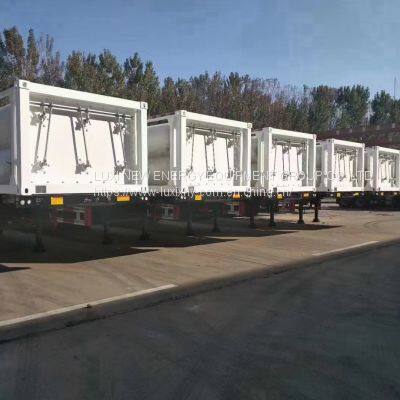 CNG Virtural Pipeline cng container fro Road TransportsationUS$ 80000 - 100000MOQ: 1 SetBrand Name: LUXIPlace of Origin: ChinaModel Number: GSJ12-2450-CNG-25Material: SteelLUXI NEW ENERGY EQUIPMENT GROUP CO.,LTD
CNG Virtural Pipeline cng container fro Road TransportsationUS$ 80000 - 100000MOQ: 1 SetBrand Name: LUXIPlace of Origin: ChinaModel Number: GSJ12-2450-CNG-25Material: SteelLUXI NEW ENERGY EQUIPMENT GROUP CO.,LTD cng containerNegotiableMOQ: 100 PiecesMaterial: SteelUse: CNGPressure: HighPlace of Origin: Hebei, ChinaHebei Baigong Industrial Co., Ltd.
cng containerNegotiableMOQ: 100 PiecesMaterial: SteelUse: CNGPressure: HighPlace of Origin: Hebei, ChinaHebei Baigong Industrial Co., Ltd.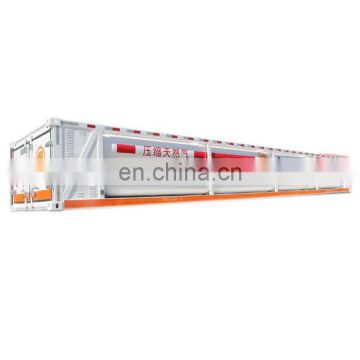 Vehicular 20ft and 40ft cng containerUS$ 50,000 - 80,000MOQ: 1 UnitBrand Name: ACEPlace of Origin: Tianjin, ChinaModel Number: ISOType: Tank ContainerWhite Tarpaulin Co., Ltd
Vehicular 20ft and 40ft cng containerUS$ 50,000 - 80,000MOQ: 1 UnitBrand Name: ACEPlace of Origin: Tianjin, ChinaModel Number: ISOType: Tank ContainerWhite Tarpaulin Co., Ltd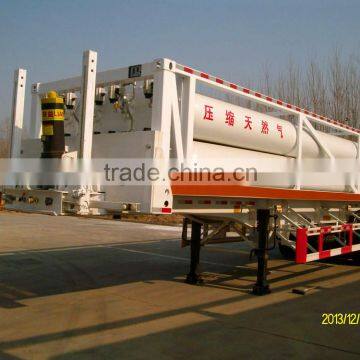 ISO11120,8-tube bundle cng containerNegotiableMOQ: 1 SetPlace of Origin: Shandong, ChinaBrand Name: LUXIModel Number: GSJ08-2210-CNG-25Type: CNGLuxi New Energy Equipment Group Co., Ltd.
ISO11120,8-tube bundle cng containerNegotiableMOQ: 1 SetPlace of Origin: Shandong, ChinaBrand Name: LUXIModel Number: GSJ08-2210-CNG-25Type: CNGLuxi New Energy Equipment Group Co., Ltd.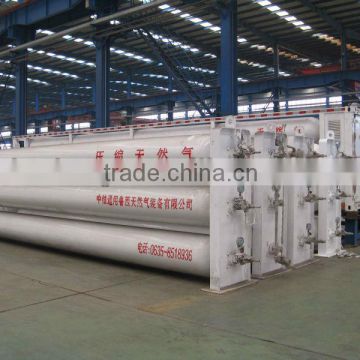 25MPa cng container for Gas StationUS$ 5,000 - 8,000MOQ: 1 SetMaterial: SteelUse: CNGPressure: HighPlace of Origin: Shandong, ChinaZhongyou Tongyong Luxi Natural Gas Equipment Co., Ltd.
25MPa cng container for Gas StationUS$ 5,000 - 8,000MOQ: 1 SetMaterial: SteelUse: CNGPressure: HighPlace of Origin: Shandong, ChinaZhongyou Tongyong Luxi Natural Gas Equipment Co., Ltd. 40ft 12Tubes High Pressure cng containerNegotiableMOQ: 1 UnitCondition: NewPlace of Origin: ChinaBrand Name: GASOOOBeijing Uec Corporation
40ft 12Tubes High Pressure cng containerNegotiableMOQ: 1 UnitCondition: NewPlace of Origin: ChinaBrand Name: GASOOOBeijing Uec Corporation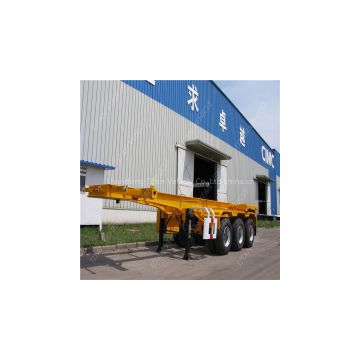 Truck Trailer Use and Steel Material cng containerUS$ 1 - 1MOQ: 1 PieceBrand Name: TITANPlace of Origin: ChinaModel Number: semi trailerShandong?Titan?Vehicle?Co.,Ltd?
Truck Trailer Use and Steel Material cng containerUS$ 1 - 1MOQ: 1 PieceBrand Name: TITANPlace of Origin: ChinaModel Number: semi trailerShandong?Titan?Vehicle?Co.,Ltd?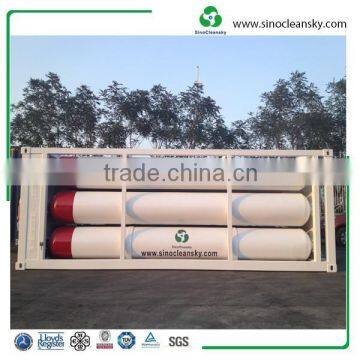 ISO11120 40feet OD559mm 12tubes cng containerNegotiableMOQ: 1 SetMaterial: SteelPlace of Origin: ChinaBrand Name: SINOCLEANSKYModel Number: SCS1225CS-40FBeijing Sinocleansky Technologies Corp.
ISO11120 40feet OD559mm 12tubes cng containerNegotiableMOQ: 1 SetMaterial: SteelPlace of Origin: ChinaBrand Name: SINOCLEANSKYModel Number: SCS1225CS-40FBeijing Sinocleansky Technologies Corp. cng container Tube Bundle Semi Trailer (8,9,10,12 tubes)for saleUS$ 60,000 - 90,000MOQ: 1 SetOEM No.: RequirementMax Payload: 40TSize: 12500*2500*1550mmPlace of Origin: Zhejiang, ChinaHangzhou ChengYingYi Energy Technology Co., Ltd.
cng container Tube Bundle Semi Trailer (8,9,10,12 tubes)for saleUS$ 60,000 - 90,000MOQ: 1 SetOEM No.: RequirementMax Payload: 40TSize: 12500*2500*1550mmPlace of Origin: Zhejiang, ChinaHangzhou ChengYingYi Energy Technology Co., Ltd.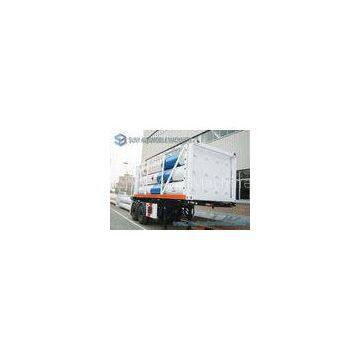 High Performance 12 Tubes Containe CNG Tank Trailer ISO11120 / BVUS$ 4 - 5MOQ: 1 MeterBrand Name: NFCasePlace of Origin: ChinaModel Number: AIA-1Hubei Suny Automobile And Machinery Co., Ltd
High Performance 12 Tubes Containe CNG Tank Trailer ISO11120 / BVUS$ 4 - 5MOQ: 1 MeterBrand Name: NFCasePlace of Origin: ChinaModel Number: AIA-1Hubei Suny Automobile And Machinery Co., Ltd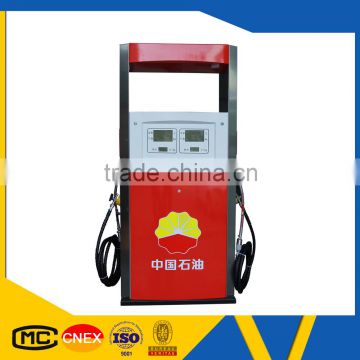 CNG gas filling equipment used for container gas stationUS$ 8,000 - 16,000MOQ: 1 SetPlace of Origin: Sichuan, ChinaBrand Name: YenergyModel Number: JQJ-2Z30AChengdu Yuneng Energy Equipment Co., Ltd.
CNG gas filling equipment used for container gas stationUS$ 8,000 - 16,000MOQ: 1 SetPlace of Origin: Sichuan, ChinaBrand Name: YenergyModel Number: JQJ-2Z30AChengdu Yuneng Energy Equipment Co., Ltd.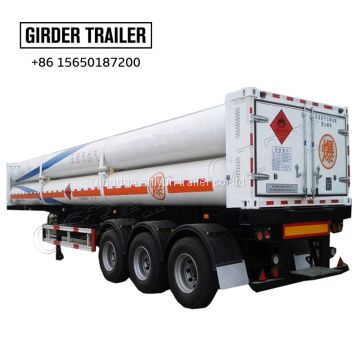 3 axles transporting CNG gas cylinder container tanker semi trailer for saleUS$ 111000 - 113000MOQ: 1 SetBrand Name: GIRDER TRAILERPlace of Origin: ChinaModel Number: GT0301GPQMaterial: SteelQingdao shiyun trailer co.,ltd
3 axles transporting CNG gas cylinder container tanker semi trailer for saleUS$ 111000 - 113000MOQ: 1 SetBrand Name: GIRDER TRAILERPlace of Origin: ChinaModel Number: GT0301GPQMaterial: SteelQingdao shiyun trailer co.,ltd CNG Compressed Natural Gas Containers , High Pressure Pressed Steel Tanks ISO9809NegotiableMOQ: 1Brand Name: BANNER VESSELPlace of Origin: ChinaModel Number: CNP25-XXX-XXXACNSG Banner Energy Tech Co., Ltd.
CNG Compressed Natural Gas Containers , High Pressure Pressed Steel Tanks ISO9809NegotiableMOQ: 1Brand Name: BANNER VESSELPlace of Origin: ChinaModel Number: CNP25-XXX-XXXACNSG Banner Energy Tech Co., Ltd.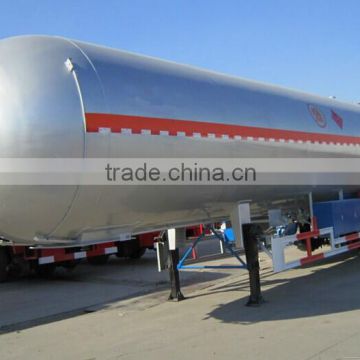 china manufacturer lpg container semi-trailer natural gas trailer for lpg lng cng filling stationNegotiableMOQ: 1 UnitType: Semi-TrailerMaterial: SteelCertification: DOTSize: 12050*2490*3880Chengli Special Automobile Co., Ltd.
china manufacturer lpg container semi-trailer natural gas trailer for lpg lng cng filling stationNegotiableMOQ: 1 UnitType: Semi-TrailerMaterial: SteelCertification: DOTSize: 12050*2490*3880Chengli Special Automobile Co., Ltd.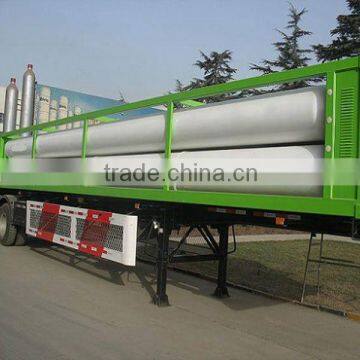 Yukun GSX08-2915-CNG-25 8 tubes container semi trailer for saleUS$ 10,000 - 100,000MOQ: 1 SetType: Semi-TrailerMaterial: SteelCertification: Other, ISOModel Number: GSX08-2915-CNG-25Zhengzhou Yukun Machinery Equipment Co., Ltd.
Yukun GSX08-2915-CNG-25 8 tubes container semi trailer for saleUS$ 10,000 - 100,000MOQ: 1 SetType: Semi-TrailerMaterial: SteelCertification: Other, ISOModel Number: GSX08-2915-CNG-25Zhengzhou Yukun Machinery Equipment Co., Ltd.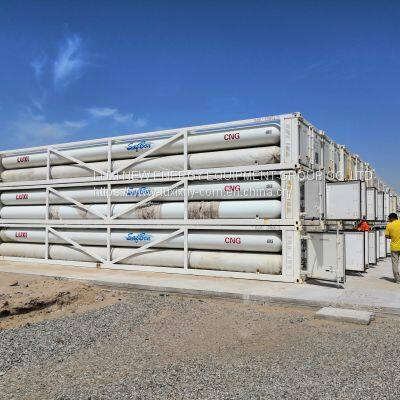 China TOP3 CNG Jumbo Tube Skid Trailer CNG Tube Skid Container cylinderUS$ 80000 - 100000MOQ: 1 SetBrand Name: LUXIPlace of Origin: ChinaModel Number: GSJ12-2450-CNG-25Material: SteelLUXI NEW ENERGY EQUIPMENT GROUP CO.,LTD
China TOP3 CNG Jumbo Tube Skid Trailer CNG Tube Skid Container cylinderUS$ 80000 - 100000MOQ: 1 SetBrand Name: LUXIPlace of Origin: ChinaModel Number: GSJ12-2450-CNG-25Material: SteelLUXI NEW ENERGY EQUIPMENT GROUP CO.,LTD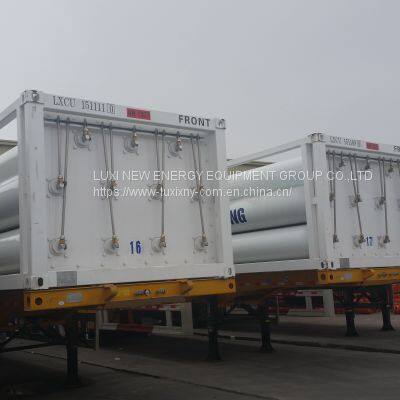 China famous Brand CNG Jumbo Tube Skid Trailer CNG Tube Skid Container cylinderUS$ 80000 - 100000MOQ: 1 SetBrand Name: LUXIPlace of Origin: ChinaModel Number: GSJ12-2450-CNG-25Material: SteelLUXI NEW ENERGY EQUIPMENT GROUP CO.,LTD
China famous Brand CNG Jumbo Tube Skid Trailer CNG Tube Skid Container cylinderUS$ 80000 - 100000MOQ: 1 SetBrand Name: LUXIPlace of Origin: ChinaModel Number: GSJ12-2450-CNG-25Material: SteelLUXI NEW ENERGY EQUIPMENT GROUP CO.,LTD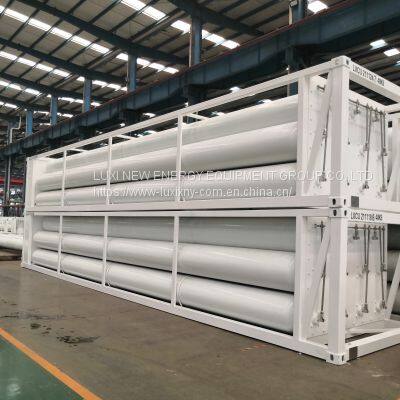 Hot Sale CNG Jumbo Tube Skid Trailer CNG Tube Skid Container cylinderUS$ 80000 - 100000MOQ: 1 SetBrand Name: LUXIPlace of Origin: ChinaModel Number: GSJ12-2450-CNG-25Material: SteelLUXI NEW ENERGY EQUIPMENT GROUP CO.,LTD
Hot Sale CNG Jumbo Tube Skid Trailer CNG Tube Skid Container cylinderUS$ 80000 - 100000MOQ: 1 SetBrand Name: LUXIPlace of Origin: ChinaModel Number: GSJ12-2450-CNG-25Material: SteelLUXI NEW ENERGY EQUIPMENT GROUP CO.,LTD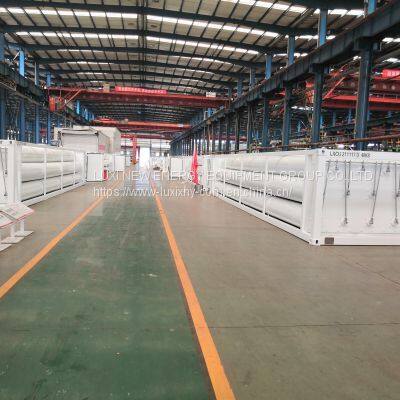 Hot Sale CNG Jumbo Tube Skid Trailer CNG Tube Skid Container cylinderUS$ 80000 - 100000MOQ: 1 SetBrand Name: LUXIPlace of Origin: ChinaModel Number: GSJ12-2450-CNG-25Material: SteelLUXI NEW ENERGY EQUIPMENT GROUP CO.,LTD
Hot Sale CNG Jumbo Tube Skid Trailer CNG Tube Skid Container cylinderUS$ 80000 - 100000MOQ: 1 SetBrand Name: LUXIPlace of Origin: ChinaModel Number: GSJ12-2450-CNG-25Material: SteelLUXI NEW ENERGY EQUIPMENT GROUP CO.,LTD CNG Cylinder Tube Skid Container Best Sale CNG Storage Tube SkidUS$ 80000 - 100000MOQ: 1 SetBrand Name: LUXIPlace of Origin: ChinaModel Number: GSJ12-2450-CNG-25Material: SteelLUXI NEW ENERGY EQUIPMENT GROUP CO.,LTD
CNG Cylinder Tube Skid Container Best Sale CNG Storage Tube SkidUS$ 80000 - 100000MOQ: 1 SetBrand Name: LUXIPlace of Origin: ChinaModel Number: GSJ12-2450-CNG-25Material: SteelLUXI NEW ENERGY EQUIPMENT GROUP CO.,LTD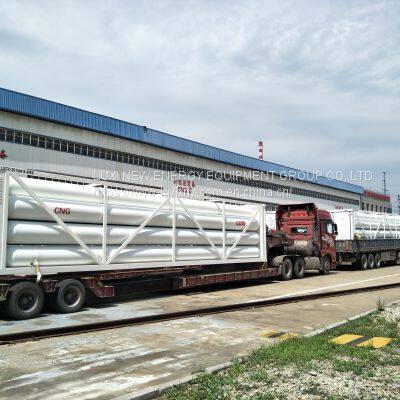 CNG Cylinder Tube Skid ContainerUS$ 80000 - 100000MOQ: 1 SetBrand Name: LUXIPlace of Origin: ChinaModel Number: GSJ12-2450-CNG-25Material: SteelLUXI NEW ENERGY EQUIPMENT GROUP CO.,LTD
CNG Cylinder Tube Skid ContainerUS$ 80000 - 100000MOQ: 1 SetBrand Name: LUXIPlace of Origin: ChinaModel Number: GSJ12-2450-CNG-25Material: SteelLUXI NEW ENERGY EQUIPMENT GROUP CO.,LTD CNG Cylinder Tube Skid ContainerUS$ 80000 - 100000MOQ: 1 SetBrand Name: LUXIPlace of Origin: ChinaModel Number: GSJ12-2450-CNG-25Material: SteelLUXI NEW ENERGY EQUIPMENT GROUP CO.,LTD
CNG Cylinder Tube Skid ContainerUS$ 80000 - 100000MOQ: 1 SetBrand Name: LUXIPlace of Origin: ChinaModel Number: GSJ12-2450-CNG-25Material: SteelLUXI NEW ENERGY EQUIPMENT GROUP CO.,LTD Gas CNG Cylinder Tube Skid Container Best Sale CNG Storage Tube SkidUS$ 80000 - 100000MOQ: 1 SetBrand Name: LUXIPlace of Origin: ChinaModel Number: GSJ12-2450-CNG-25Material: SteelLUXI NEW ENERGY EQUIPMENT GROUP CO.,LTD
Gas CNG Cylinder Tube Skid Container Best Sale CNG Storage Tube SkidUS$ 80000 - 100000MOQ: 1 SetBrand Name: LUXIPlace of Origin: ChinaModel Number: GSJ12-2450-CNG-25Material: SteelLUXI NEW ENERGY EQUIPMENT GROUP CO.,LTD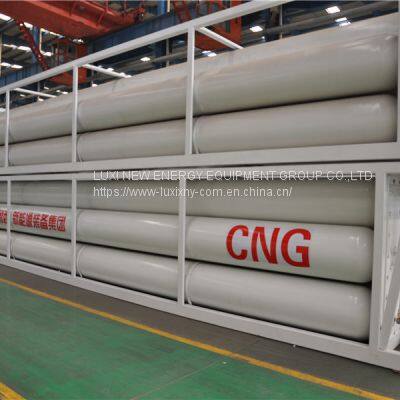 Best Quality CNG Cylinder Tube Skid Container Best Sale CNG Storage Tube SkidUS$ 80000 - 100000MOQ: 1 SetBrand Name: LUXIPlace of Origin: ChinaModel Number: GSJ12-2450-CNG-25Material: SteelLUXI NEW ENERGY EQUIPMENT GROUP CO.,LTD
Best Quality CNG Cylinder Tube Skid Container Best Sale CNG Storage Tube SkidUS$ 80000 - 100000MOQ: 1 SetBrand Name: LUXIPlace of Origin: ChinaModel Number: GSJ12-2450-CNG-25Material: SteelLUXI NEW ENERGY EQUIPMENT GROUP CO.,LTD Hot Sale Famous Brand CNG Cylinder Tube Skid Container Best Sale CNG Storage Tube SkidUS$ 80000 - 100000MOQ: 1 SetBrand Name: LUXIPlace of Origin: ChinaModel Number: GSJ12-2450-CNG-25Material: SteelLUXI NEW ENERGY EQUIPMENT GROUP CO.,LTD
Hot Sale Famous Brand CNG Cylinder Tube Skid Container Best Sale CNG Storage Tube SkidUS$ 80000 - 100000MOQ: 1 SetBrand Name: LUXIPlace of Origin: ChinaModel Number: GSJ12-2450-CNG-25Material: SteelLUXI NEW ENERGY EQUIPMENT GROUP CO.,LTD Hot Sale 2021 CNG Cylinder Tube Skid Container Best Sale CNG Storage Tube SkidUS$ 80000 - 100000MOQ: 1 SetBrand Name: LUXIPlace of Origin: ChinaModel Number: GSJ12-2450-CNG-25Material: SteelLUXI NEW ENERGY EQUIPMENT GROUP CO.,LTD
Hot Sale 2021 CNG Cylinder Tube Skid Container Best Sale CNG Storage Tube SkidUS$ 80000 - 100000MOQ: 1 SetBrand Name: LUXIPlace of Origin: ChinaModel Number: GSJ12-2450-CNG-25Material: SteelLUXI NEW ENERGY EQUIPMENT GROUP CO.,LTD MH Purchasing Director submitted an RFQ for CNG cascade container for gas storage and transportation use2025-09-28 19:08:20
MH Purchasing Director submitted an RFQ for CNG cascade container for gas storage and transportation use2025-09-28 19:08:20 GW Business Owner placed an order for China Top 3 CNG cascade container for gas storage and transportation1 hour ago
GW Business Owner placed an order for China Top 3 CNG cascade container for gas storage and transportation1 hour ago GT Purchaser negotiating terms for China CNG Tube Skid Container CNG jumbo tube skid from China Manufacturer,18 hours ago
GT Purchaser negotiating terms for China CNG Tube Skid Container CNG jumbo tube skid from China Manufacturer,18 hours ago TN Operations Head requested a quote for Hot Sale CNG Jumbo Tube Skid Trailer CNG Tube Skid Container cylinder2025-09-28 23:44:32
TN Operations Head requested a quote for Hot Sale CNG Jumbo Tube Skid Trailer CNG Tube Skid Container cylinder2025-09-28 23:44:32 NO Purchaser placed an order for China CNG Tube Skid Container CNG jumbo tube skid from China Manufacturer,2025-09-26 02:40:01
NO Purchaser placed an order for China CNG Tube Skid Container CNG jumbo tube skid from China Manufacturer,2025-09-26 02:40:01 RW Procurement Lead negotiating terms for Best Sale CNG cascade container for gas storage and transportation8 hours ago
RW Procurement Lead negotiating terms for Best Sale CNG cascade container for gas storage and transportation8 hours ago AD Business Owner requested a quote for Hot Sale CNG Jumbo Tube Skid Trailer CNG Tube Skid Container cylinder23 hours ago
AD Business Owner requested a quote for Hot Sale CNG Jumbo Tube Skid Trailer CNG Tube Skid Container cylinder23 hours ago NI Buyer inquired about CNG Cylinder Tube Skid Container for Road Transportation2025-09-29 14:03:19
NI Buyer inquired about CNG Cylinder Tube Skid Container for Road Transportation2025-09-29 14:03:19 GBA Purchaser placed an order for Hot Sale CNG Jumbo Tube Skid Trailer CNG Tube Skid Container cylinder2025-09-29 18:40:34
GBA Purchaser placed an order for Hot Sale CNG Jumbo Tube Skid Trailer CNG Tube Skid Container cylinder2025-09-29 18:40:34 CNG Cylinder Tube Skid Container Best Sale CNG Storage Tube SkidUS$ 80000 - 100000MOQ: 1 SetBrand Name: LUXIPlace of Origin: ChinaModel Number: GSJ12-2450-CNG-25Material: SteelLUXI NEW ENERGY EQUIPMENT GROUP CO.,LTD
CNG Cylinder Tube Skid Container Best Sale CNG Storage Tube SkidUS$ 80000 - 100000MOQ: 1 SetBrand Name: LUXIPlace of Origin: ChinaModel Number: GSJ12-2450-CNG-25Material: SteelLUXI NEW ENERGY EQUIPMENT GROUP CO.,LTD CNG Cylinder Tube Skid Container Best Sale CNG Storage Tube SkidUS$ 80000 - 100000MOQ: 1 SetBrand Name: LUXIPlace of Origin: ChinaModel Number: GSJ12-2450-CNG-25Material: SteelLUXI NEW ENERGY EQUIPMENT GROUP CO.,LTD
CNG Cylinder Tube Skid Container Best Sale CNG Storage Tube SkidUS$ 80000 - 100000MOQ: 1 SetBrand Name: LUXIPlace of Origin: ChinaModel Number: GSJ12-2450-CNG-25Material: SteelLUXI NEW ENERGY EQUIPMENT GROUP CO.,LTD CNG Cylinder Tube Skid Container Best Sale CNG Storage Tube SkidUS$ 80000 - 100000MOQ: 1 SetBrand Name: LUXIPlace of Origin: ChinaModel Number: GSJ12-2450-CNG-25Material: SteelLUXI NEW ENERGY EQUIPMENT GROUP CO.,LTD
CNG Cylinder Tube Skid Container Best Sale CNG Storage Tube SkidUS$ 80000 - 100000MOQ: 1 SetBrand Name: LUXIPlace of Origin: ChinaModel Number: GSJ12-2450-CNG-25Material: SteelLUXI NEW ENERGY EQUIPMENT GROUP CO.,LTD CNG Cylinder Tube Skid Container Best Sale CNG Storage Tube SkidUS$ 80000 - 100000MOQ: 1 SetBrand Name: LUXIPlace of Origin: ChinaModel Number: GSJ12-2450-CNG-25Material: SteelLUXI NEW ENERGY EQUIPMENT GROUP CO.,LTD
CNG Cylinder Tube Skid Container Best Sale CNG Storage Tube SkidUS$ 80000 - 100000MOQ: 1 SetBrand Name: LUXIPlace of Origin: ChinaModel Number: GSJ12-2450-CNG-25Material: SteelLUXI NEW ENERGY EQUIPMENT GROUP CO.,LTD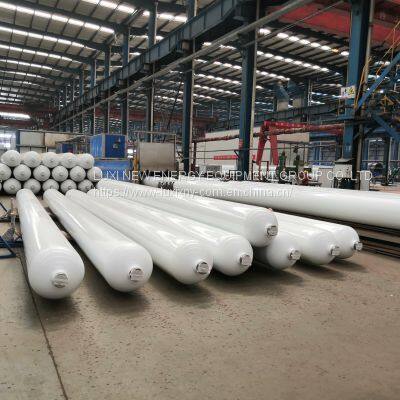 CNG Jumbo Cylinder CNG Cylinder Container for Road TransportationUS$ 80000 - 100000MOQ: 1 SetBrand Name: LUXIPlace of Origin: ChinaModel Number: GSJ12-2450-CNG-25Material: SteelLUXI NEW ENERGY EQUIPMENT GROUP CO.,LTD
CNG Jumbo Cylinder CNG Cylinder Container for Road TransportationUS$ 80000 - 100000MOQ: 1 SetBrand Name: LUXIPlace of Origin: ChinaModel Number: GSJ12-2450-CNG-25Material: SteelLUXI NEW ENERGY EQUIPMENT GROUP CO.,LTD CNG Jumbo Cylinder CNG Cylinder Container for Road TransportationUS$ 80000 - 100000MOQ: 1 SetBrand Name: LUXIPlace of Origin: ChinaModel Number: GSJ12-2450-CNG-25Material: SteelLUXI NEW ENERGY EQUIPMENT GROUP CO.,LTD
CNG Jumbo Cylinder CNG Cylinder Container for Road TransportationUS$ 80000 - 100000MOQ: 1 SetBrand Name: LUXIPlace of Origin: ChinaModel Number: GSJ12-2450-CNG-25Material: SteelLUXI NEW ENERGY EQUIPMENT GROUP CO.,LTD CNG cascade container for gas storage and transportationUS$ 80000 - 100000MOQ: 1 SetBrand Name: LUXIPlace of Origin: ChinaModel Number: GSJ12-2450-CNG-25Material: SteelLUXI NEW ENERGY EQUIPMENT GROUP CO.,LTD
CNG cascade container for gas storage and transportationUS$ 80000 - 100000MOQ: 1 SetBrand Name: LUXIPlace of Origin: ChinaModel Number: GSJ12-2450-CNG-25Material: SteelLUXI NEW ENERGY EQUIPMENT GROUP CO.,LTD






